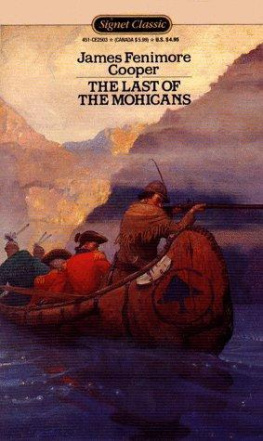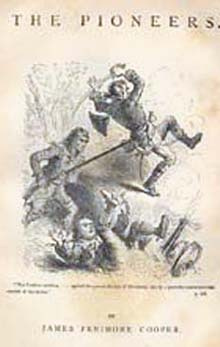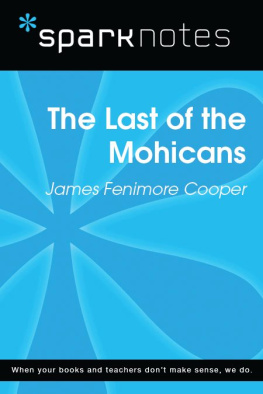James Fenimore Cooper - Last of the Mohicans (Barnes & Noble Classics Series)
Here you can read online James Fenimore Cooper - Last of the Mohicans (Barnes & Noble Classics Series) full text of the book (entire story) in english for free. Download pdf and epub, get meaning, cover and reviews about this ebook. publisher: Barnes & Noble, genre: Detective and thriller. Description of the work, (preface) as well as reviews are available. Best literature library LitArk.com created for fans of good reading and offers a wide selection of genres:
Romance novel
Science fiction
Adventure
Detective
Science
History
Home and family
Prose
Art
Politics
Computer
Non-fiction
Religion
Business
Children
Humor
Choose a favorite category and find really read worthwhile books. Enjoy immersion in the world of imagination, feel the emotions of the characters or learn something new for yourself, make an fascinating discovery.

- Book:Last of the Mohicans (Barnes & Noble Classics Series)
- Author:
- Publisher:Barnes & Noble
- Genre:
- Rating:5 / 5
- Favourites:Add to favourites
- Your mark:
- 100
- 1
- 2
- 3
- 4
- 5
Last of the Mohicans (Barnes & Noble Classics Series) : summary, description and annotation
We offer to read an annotation, description, summary or preface (depends on what the author of the book "Last of the Mohicans (Barnes & Noble Classics Series) " wrote himself). If you haven't found the necessary information about the book — write in the comments, we will try to find it.
James Fenimore Cooper: author's other books
Who wrote Last of the Mohicans (Barnes & Noble Classics Series) ? Find out the surname, the name of the author of the book and a list of all author's works by series.
Last of the Mohicans (Barnes & Noble Classics Series) — read online for free the complete book (whole text) full work
Below is the text of the book, divided by pages. System saving the place of the last page read, allows you to conveniently read the book "Last of the Mohicans (Barnes & Noble Classics Series) " online for free, without having to search again every time where you left off. Put a bookmark, and you can go to the page where you finished reading at any time.
Font size:
Interval:
Bookmark:
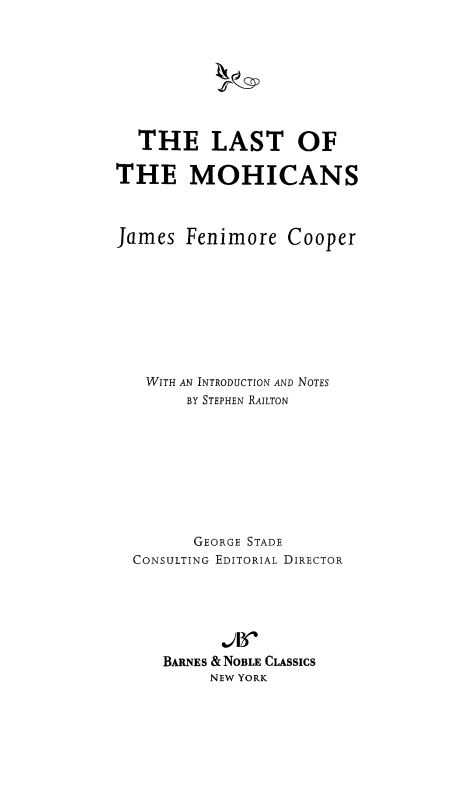
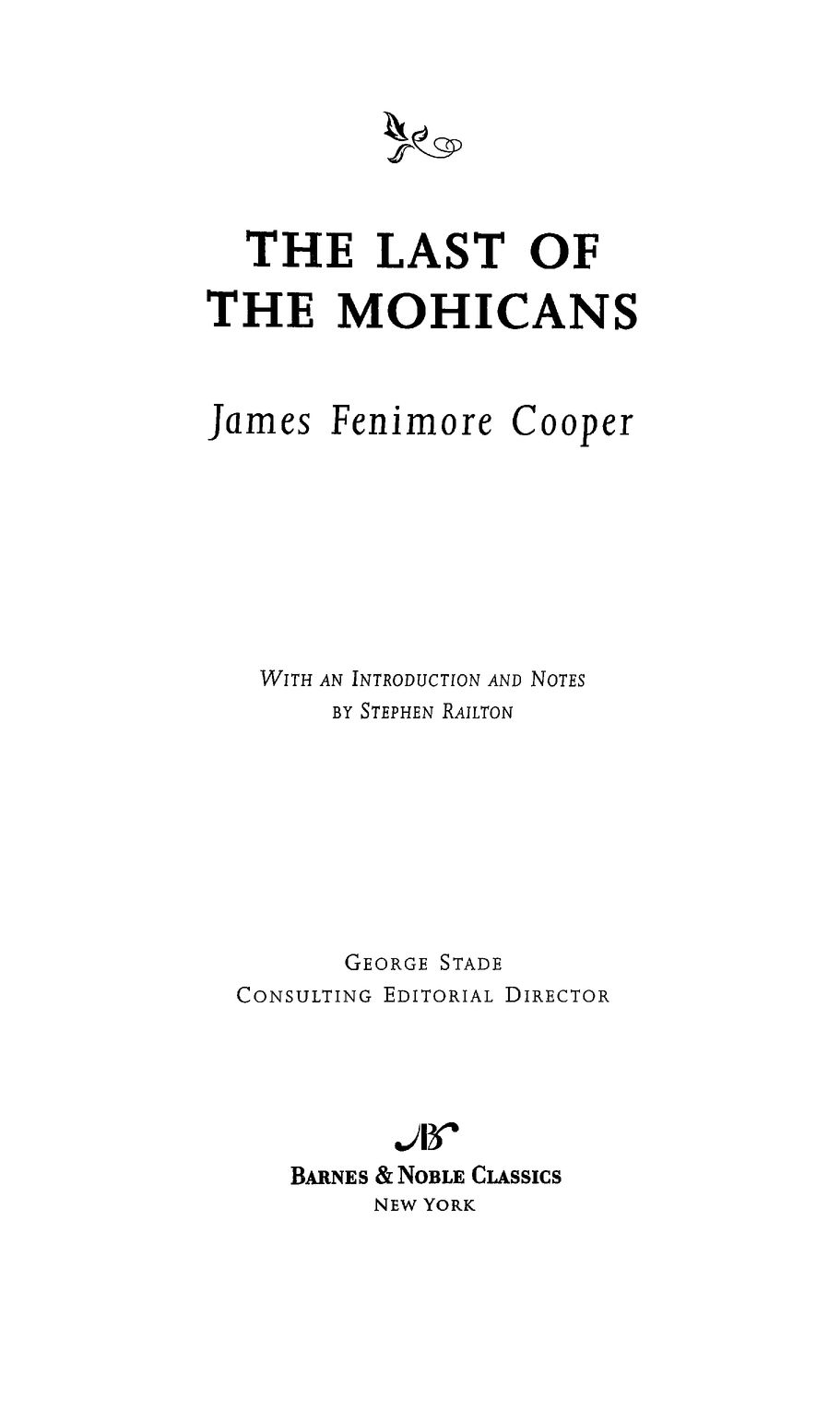
| 1789 | The twelfth of thirteen children, James Cooper is born on Septem ber 15 to Judge William Cooper and Elizabeth Fenimore Cooper in Burlington, New Jersey. George Washington is inaugurated presi dent of the United States. |
| 1790 | The Coopers move to the frontier country of upstate New York, where William had founded Cooperstown a few years earlier. In his later novels, James will repeatedly draw on the rigors of his early frontier experiences. |
| 1803 | James Fenimore Cooper enters Yale. |
| 1805 | He is expelled from Yale for blowing off a fellow students door with gunpowder. |
| 1806 | Cooper works as a sailor on the Stirling, a merchant vessel. His trav els take him to Spain and England. |
| 1808 | Cooper joins the Navy, making Atlantic passages and serving at an isolated post on Lake Ontario. |
| 1811 | Cooper marries Susan Augusta De Lancey, the daughter of a wealthy family in Westchester County, New York. The couple, plagued by fi nancial troubles for the next several years, moves to various towns in New York State before buying a country home near Scarsdale, where they settle with their seven children. |
| 1812 | The United States declares war on Great Britain. |
| 1814 | British troops set fire to Washington, D.C. Francis Scott Key writes The Star-Spangled Banner. |
| 1819 | Washington Irvings tale Rip Van Winkle appears. |
| 1820 | After accepting a challenge from his wife to write a book, Cooper pens Precaution, a novel of manners. The Missouri Compromise draws the line between free states and slave states. |
| 1821 | The Spy, a historical romance set during the American Revolution, is published, establishing Cooper as a major literary figure. |
| 1823 | Cooper publishes The Pioneers, the first of the five Leatherstocking Tales, which are set in the 1700s, both before and after the Amer ican Revolution, and tell the life of hunter, trapper, and scout Natty |
| Bumppo, known as Leatherstocking; the books follow Natty through various periods of his life, but not in chronological order. | |
| 1826 | The Last of the Mohicans, the second Leatherstocking Tale, is published; Natty aligns himself with Uncas, the Indian of the title, and works as a scout in the British army. The Cooper family moves to Europe, and resides in Paris, Switzerland, Belgium, and England for the next seven years. |
| 1827 | The Prairie, the third novel in the Leatherstocking series, is pub lished ; Natty Bumppo dies among the Indians west of the Missis sippi, where he has been driven by the advancing line of pioneers. |
| 1829 | Cooper publishes Notions of the Americans, a reflection on his native land and one of six books he writes while living abroad. |
| 1833 |
Font size:
Interval:
Bookmark:
Similar books «Last of the Mohicans (Barnes & Noble Classics Series) »
Look at similar books to Last of the Mohicans (Barnes & Noble Classics Series) . We have selected literature similar in name and meaning in the hope of providing readers with more options to find new, interesting, not yet read works.
Discussion, reviews of the book Last of the Mohicans (Barnes & Noble Classics Series) and just readers' own opinions. Leave your comments, write what you think about the work, its meaning or the main characters. Specify what exactly you liked and what you didn't like, and why you think so.

